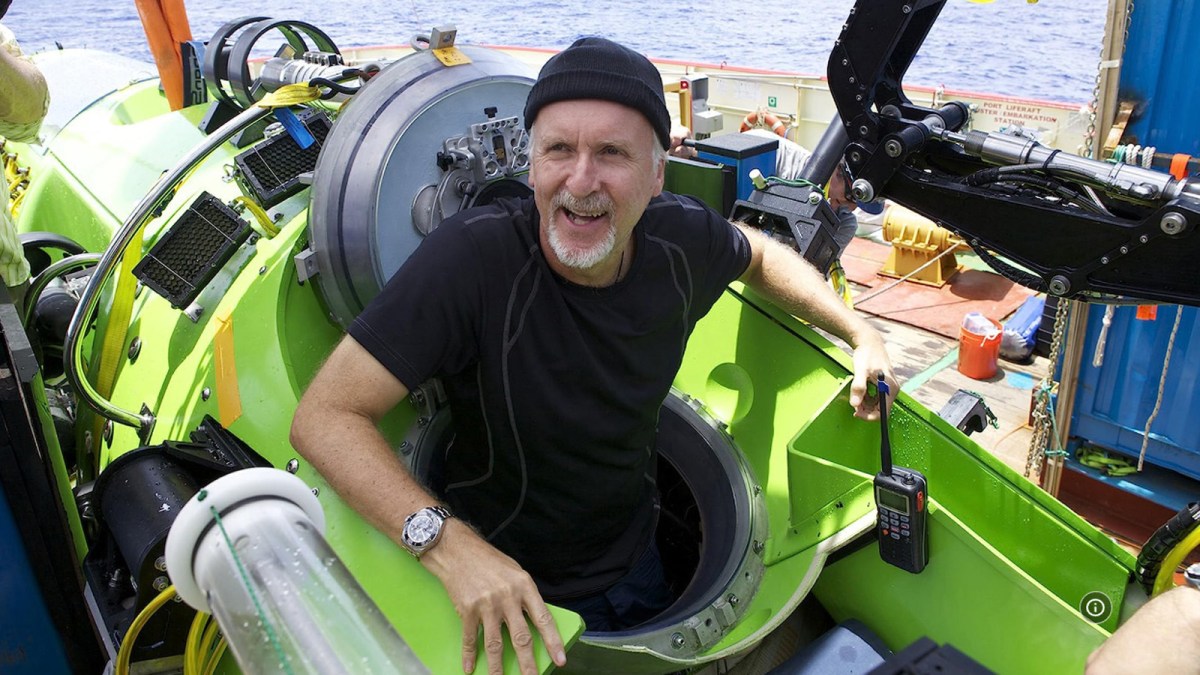Hollywood director James Cameron has been making a lot of public remarks lately about the already-infamous Titan submersible tragedy, in which a group of ocean-exploring tourists who wanted to view the ruins of the Titanic at the bottom of the ocean succumbed to grisly deaths themselves in a way that eerily parallels the 1912 disaster, but does he truly have the authority to weigh in on this matter?
Cameron has impressively helmed three out of the top four highest-grossing movies of all-time, including Avatar, its 2022 sequel Avatar: The War of Water, and Titanic, all of which have grossed more than $2 billion each worldwide. But surely, having a knack for making beaucoup bucks at the box office does not necessarily translate to having expertise in engineering — or does it?
The filmmaker does not have a formal degree in science, so you’d be forgiven for thinking he may have had a former life as some kind of engineer. However, he did briefly go to college at California State University at Fullerton and studied physics, then switched to English, before dropping out, according to Filmmakers.com (via the Wayback Machine).
Cameron’s early career in special effects
The director’s early career included hooking up with legendary producer Roger Corman, who is as known for helping to launch the careers of notable filmmakers like Martin Scorsese as he is for churning out notoriously low budget B-movies, such as 1994’s doomed Fantastic Four, a film that ultimately never saw an official release. It was during this era that Cameron developed a niche for helming special effects duties, as he explained in an archived interview for the website TerminatorFiles.com:
“I was hired by a guy named Chuck Comisky, who was working for Roger as the head of special effects on Battle Beyond the Stars. I just knocked on their door one day with this reel that I’d put together with the dentists’ money. I was totally broke and needed a job. I thought, I’ve got to get my hands dirty in the real film world, even if it’s totally down and dirty, Corman-style. So I presented myself as a special effects cameraman, because I had done some matte work and some miniature work.
Well, they had that covered, so they hired me as a model builder. I built the model of the main character’s ship. It was a very goofy design: a spaceship with tits. Hopefully the one and only spaceship with tits. I guess maybe that’s why I got Piranha II. I guess the producers figured the guy who could come up with the spaceship with tits must be able to do something with flying piranha.”
Some of Cameron’s notable credits during his early era include being the special effects director of photography for John Carpenter’s Escape from New York (1981) and directing the campy horror film Piranha II: The Spawning (1982) after being promoted from a special effects supervisor for that film.
Breakout hits and The Abyss
Soon, Cameron proved his potential with the 1984 breakout hit The Terminator, a relatively low-budget horror/action film that made great use of special effects for the time and helped launch Arnold Schwarzenegger as a formidable force in Hollywood, while the hits seemed to keep on coming with 1986’s Aliens, too.
It was with Cameron’s 1989 movie The Abyss that his secondary career as an ocean explorer truly kicked off. For the production of the movie about deep ocean explorers who encounter aliens, he actually began building diving equipment and underwater cameras for the movie, according to San Diego Reader. After that, Cameron described himself as “practicing engineering without a degree.” From that point on, he would have a hand in helping to innovate new filmmaking technology with seemingly every subsequent movie he worked on. Most recently, he helped pioneer the technology for doing motion capture work for actors submersed underwater for Avatar: The Way of Water.
Cameron’s passion for deep water exploration culminated in co-designing the Deepsea Challenger submarine, alongside a team of engineers, a vessel that he piloted in 2012 and set a world record for the deepest solo dive in a submersible, reaching 36,000 feet below the ocean.
When it comes to viewing the Titanic wreckage in submersibles throughout his career, Cameron and fellow National Geographic Explorer at Large Bob Ballard are the two people on the planet “who have spent the most time exploring” it, according to National Geographic.
Listening to history’s lessons
Even though robotic vessels have arguably replaced the need for humans to risk their own lives engaging in deep-water exploration, Cameron told National Geographic that he still believes in “the value of a human bearing witness” in a vessel in person, rather than piloting a craft remotely.
However, when it comes to the Titan vessel, in which five people lost their lives in a presumed deep water implosion earlier this week, Cameron emphasized the importance of adhering to traditional certifications, something OceanGate CEO Stockton Rush was notoriously dismissive about. If such regulations are ignored, future explorers could be doomed to repeat history:
“What is the lesson of Titanic? […] Heed the warnings. Do not let greed and arrogance supersede your best judgment. I mean, the captain of Titanic was highly seasoned, highly respected, and yet he didn’t heed the warnings and he steamed full speed into an ice field on a moonless night. And 1,500 lives were forfeited as a result. That’s the lesson.”
Earlier this week, Cameron described the rescue mission that ensued for the Titan as perpetuating “false hopes” for the families of those who died in the accident, since he surmised from reports of a loud sound recorded underwater that an implosion did indeed occur, days before officials at the Coast Guard publicly declared this as the likely turn of events.

